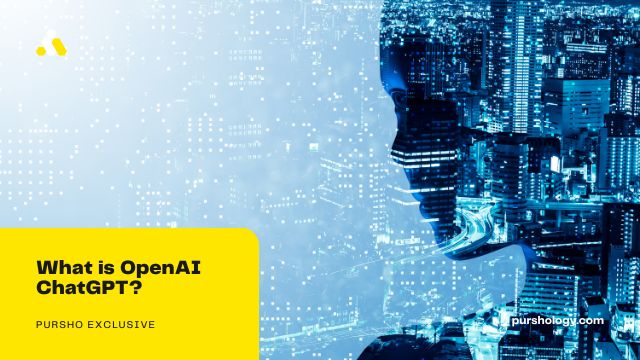- OpenAI chatGPT is a new artificial intelligence chatbot that has been designed to mimic human conversation.
What is OpenAI ChatGPT? OpenAI Chatgpt is a new artificial intelligence chatbot that has been designed to mimic human conversation.
OpenAI’s project, dubbed “chatGPT” (short for “chat bot with human like behaviour”), was created as part of the OpenAI Project, a research and development organization based in San Francisco. Since its inception in 2013, the team has focused on developing open source software for the purpose of open science and education. In June 2016, it was revealed that millions of dollars had been donated to the organization by investors including Peter Thiel’s Founders Fund and Sam Altman’s Y Combinator.
It was created through a modified version of natural language processing developed by researchers at Google Brain and Natural Language Processing Laboratory. The goal is to make any conversational system capable of speaking like a human being when communicating with other humans or computers.
- The chatbot has been designed to make it easy for people to communicate with artificial intelligence.
This is a chatbot that has been designed to be easy and fun to use. It is not equipped with any deep intelligence, and it can not do any of the things that you would expect a chatbot to be capable of (though it will sometimes say what you’d expect it to). These features are all within the scope of its customization.
The goal of this chatbot is to show that we have an easy way for people with low cognitive abilities to communicate with artificial intelligence.
- The chatbot is based on the GPT-2 algorithm, which is a natural language processing algorithm.
OpenAI ChatGPT is a chatbot based on the GPT-2 algorithm, which is a natural language processing algorithm. Although this post does not go into details about the algorithm, it does provide an overview of how it works.
The GPT-2 algorithm is an extension of the original Google Translate model created by Jurgen Schmidhuber in 1997. It can be thought of as a very simple rule-based approach for predicting human responses to naturally occurring sentences (e.g., using pattern matching). In contrast to other standards such as the Sentiment Analysis Rule Set (SAR) or WordNet, which are used to classify words and determine their meaning in natural language, GPT-2 is focused on identifying those words that have been used previously in a sentence and have high likelihood of being associated with it (i.e., they are group-specific).
By training on a high volume of examples — approximately 1 billion sentences — GPT-2 has demonstrated significant results in both accuracy and performance compared with existing alternative approaches such as NLTK or WordNet [1].
- The chatbot is able to generate responses to questions that are posed in natural language.
I’ve been working with OpenAI on a chatbot challenge since the start of this year. The team behind the project consists of different experts in different fields: artificial intelligence, computer vision and natural language processing, machine learning and robotics.
The goal is to create an open-source chatbot that can generate responses to questions in a conversational style. To achieve that, the team has built a set of basic tools for both developers and users to build their own web applications.
A new open-source project was created for that purpose. It is called “OpenAI ChatGPT” (short for “chatbot generated by people”).
- The chatbot is able to hold a conversation with a human for a prolonged period of time.
There is a lot of noise in this space, and for that reason, it’s important to be aware of the tools we can use to get the most out of our efforts.
In an initial post, I tried to briefly describe one such tool: chatGPT (an acronym for Google’s OpenAI chatbot platform). It is used by several companies around the world (shown below), but I am primarily interested in two different uses of this platform: One where you have a bot that answers questions from your users, and one where you have a bot that interacts with humans in real-time.
The first is quite straightforward; the second has more challenges. So let’s start there.
While it might seem like a simple task to tell someone what a chatbot really is, it is actually quite complex. A chatbot needs to understand not only what its operator says when interacting with it, but also what it expects from its operator when they are interacting with it as well (e.g., an ad-hoc request for information) and their intent (questions that they are trying to answer). With all these details taken into account, there are still many challenges that need to be addressed before you can start using a chatbot or speak directly with one — especially if you want to make use of the platform’s features:
- Testability – The ability for users to interact with your bot without any human being holding the cursor over any particular button or line at all times is crucial if you want people who don’t know anything about computer science or artificial intelligence — let alone machine learning — to interact with your bot. That said, if you are developing an interactive system, there are many ways in which you can ensure that all elements work together properly so that even users who don’t know how computers work can get something out of your product.
- Marketability – Chatbots need both technical and social skills if they are going to become general purpose agents on human-to-human interaction networks like Slack and Facebook Messenger. If they lack social skills, they will struggle in their ability to do anything meaningful; if they lack technical abilities as well, then they will likely remain incapable of doing much else besides talking gibberish all day long — which means that your bot needs both quite a bit of training on how humans think and react on what data external sources provide them etc., so as not to be trapped within
- The chatbot is able to generate new responses to questions that have not been asked before.
OpenAI has been working on chatbots for some time now and the first version of their chatbot, OpenAI ChatGPT, generated responses to a limited set of questions. The bot is not able to generate responses to questions about any other topics (i.e. it does not understand the meaning of “who” or “why”). It can also interact with users but has no knowledge about the social relationships between them .
The most interesting part is that OpenAI ChatGPT is open source, so it can be easily modified by anyone. This can be seen as a good thing because many people who want to create bots will likely want to build one with the same codebase as OpenAI ChatGPT, which means that whatever code they use will be open source (and in turn will become part of the community).
- The chatbot is able to adapt its responses to the context of the conversation.
The chatbot can have many responses, including openai chatgpt (a chatbot that uses natural language to create a high quality conversational AI).
I have written a bit about the capabilities of chatbots in previous posts but this post will focus more on the problems they can solve. For now, let’s say that a company wants to make a bot that helps its sales team to understand what its prospects are saying, and what they think about the product. The salesperson would be able to interact with it and make it respond accordingly.
A bot has natural language understanding (NLU), so it would be able to understand how the conversation is going and how relevant it is for the sales team. The company could also use this information in order to tailor their message depending on the context of the conversation. There are also some possible ways for companies to use NLU by themselves in order for their bots to receive tailored messages:
1) A bot could listen for keywords or phrases that people use frequently, such as “there’s no way”, “it’s impossible” or “we should…”, and then give them suggestions based on what they hear along with suggestions of similar words. Since people tend to use similar words together (e.g., “it’s impossible but I don’t see why not”), this is a good opportunity for bots and humans alike (though sometimes not as good). 2) Bots could listen for closed questions where in order to answer that question you need some additional information (e.g., when someone asks about why something is important). In this case, bots can ask more general questions like: “what do you think about…? Is there anything else we should know? What do you think about…? Is there any problem at all? What do you think about…? etc.). This provides an opportunity for even more specific requests (e.g., if someone wants an answer on what they should do in order to achieve better performance next year). 3) Bots can listen for keywords that tend not to be used often in conversations such as numbers, names or abbreviations like @ , @.. , * .. * etc,.
4) Bots can listen for keywords and phrases where there are multiple interpretations of what people mean at different times because of context changes.
Follow my blog.. For More Infomation.




